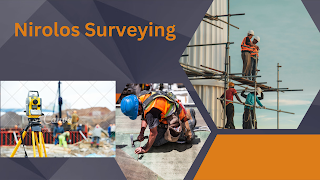What is the latest technology for surveying?
various technologies have been employed in surveying to enhance accuracy, efficiency, and data collection capabilities. However, please note that the field of technology is rapidly advancing, and there may be newer developments beyond my last update. Here are some technologies that were prominent in surveying around that time:
1. LiDAR (Light Detection and Ranging): LiDAR technology uses laser light to measure distances with high precision. It is often used in topographic mapping, terrain modeling, and 3D modeling of landscapes. LiDAR-equipped devices, such as airborne or ground-based scanners, can rapidly capture detailed elevation data.
2. GPS/GNSS Technology: Global Positioning System (GPS) and Global Navigation Satellite System (GNSS) technologies have become integral to surveying. Advanced GNSS receivers enable surveyors to obtain highly accurate positioning data, even in challenging environments. Real-time kinematic (RTK) GPS provides centimeter-level accuracy.
3. Unmanned Aerial Vehicles (UAVs) or Drones: Drones equipped with high-resolution cameras and, in some cases, LiDAR sensors, have revolutionized surveying. They are used for aerial surveys, mapping, and monitoring large areas efficiently. Drones can capture high-quality imagery and create detailed 3D models.
4. Satellite Imagery and Remote Sensing: Satellite imagery is a valuable resource for large-scale mapping and monitoring. Remote sensing technologies on satellites provide data for land cover analysis, change detection, and environmental monitoring. Companies often use satellite data for various surveying applications.
5. Total Stations: Total stations combine electronic distance measurement (EDM) technology with theodolite functionality. Surveyors use total stations for angle and distance measurements, allowing for precise mapping of points and angles on the ground.
6. Augmented Reality (AR): AR technology is being integrated into surveying tools to enhance fieldwork. By overlaying digital information onto the real-world environment, AR aids in visualizing and interpreting survey data more effectively.
7. Mobile Mapping Systems (MMS): MMS involves the use of vehicles equipped with various sensors (LiDAR, cameras, GPS) to collect geospatial data as they travel through an area. This technology is especially useful for mapping roads, utilities, and urban environments.
8. Geographic Information System (GIS): While not a surveying tool per se, GIS plays a crucial role in managing, analyzing, and visualizing spatial data collected through surveys. It helps in making informed decisions based on the gathered information.
Surveying technology is continually evolving, and newer innovations may have emerged since my last update. It's recommended to check the latest industry publications, conferences, and technology reviews for the most recent advancements in surveying technology.
1. LiDAR (Light Detection and Ranging): LiDAR technology uses laser light to measure distances with high precision. It is often used in topographic mapping, terrain modeling, and 3D modeling of landscapes. LiDAR-equipped devices, such as airborne or ground-based scanners, can rapidly capture detailed elevation data.
2. GPS/GNSS Technology: Global Positioning System (GPS) and Global Navigation Satellite System (GNSS) technologies have become integral to surveying. Advanced GNSS receivers enable surveyors to obtain highly accurate positioning data, even in challenging environments. Real-time kinematic (RTK) GPS provides centimeter-level accuracy.
3. Unmanned Aerial Vehicles (UAVs) or Drones: Drones equipped with high-resolution cameras and, in some cases, LiDAR sensors, have revolutionized surveying. They are used for aerial surveys, mapping, and monitoring large areas efficiently. Drones can capture high-quality imagery and create detailed 3D models.
4. Satellite Imagery and Remote Sensing: Satellite imagery is a valuable resource for large-scale mapping and monitoring. Remote sensing technologies on satellites provide data for land cover analysis, change detection, and environmental monitoring. Companies often use satellite data for various surveying applications.
5. Total Stations: Total stations combine electronic distance measurement (EDM) technology with theodolite functionality. Surveyors use total stations for angle and distance measurements, allowing for precise mapping of points and angles on the ground.
6. Augmented Reality (AR): AR technology is being integrated into surveying tools to enhance fieldwork. By overlaying digital information onto the real-world environment, AR aids in visualizing and interpreting survey data more effectively.
7. Mobile Mapping Systems (MMS): MMS involves the use of vehicles equipped with various sensors (LiDAR, cameras, GPS) to collect geospatial data as they travel through an area. This technology is especially useful for mapping roads, utilities, and urban environments.
8. Geographic Information System (GIS): While not a surveying tool per se, GIS plays a crucial role in managing, analyzing, and visualizing spatial data collected through surveys. It helps in making informed decisions based on the gathered information.
Surveying technology is continually evolving, and newer innovations may have emerged since my last update. It's recommended to check the latest industry publications, conferences, and technology reviews for the most recent advancements in surveying technology.





0 Comments